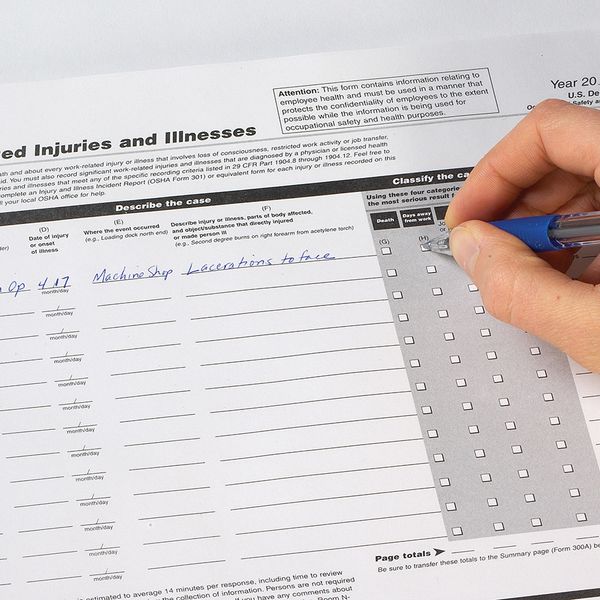OSHA memo gives new insights on first aid and injury recordkeeping
An OSHA memorandum published May 2, 2024, offers guidance on determining the recordability of musculoskeletal conditions based on the treatment provided. The evaluation of when treatments qualify as first aid includes some insights that apply to other injuries.
The memo notes that OSHA’s definition of first aid in Part 1904 differs from the definition used by health care providers. Generally, first aid refers to initial care. Even so, the memo clarifies that first aid treatments do not become medical treatment based on duration or number of applications. For example, using ice packs is not medical treatment even if it “is provided over a long period of time or involves multiple applications.”
On the other hand, the memo tells OSHA Compliance Safety and Health Officers (CSHOs) that repeated use of first aid might indicate that an injured worker is not getting needed medical care. Potentially, some employers may provide only first aid treatments in order to avoid recording an incident.
The memo warns that repeated use of first aid might imply that the employee needs medical treatment. In addition, the memo advises CSHO’s that repeated use of first aid could suggest a violation of 1910.151(a) which requires employers to make medical personnel available for consultation. If an employer denies consultation, that could be cited under 1910.151(a).
Repeated first aid treatment
Despite the warnings on repeated first aid treatments, for some cases, repeated first aid might be the only needed treatment. The memo advises CHSOs to keep in mind that:
- The number of times an employee is seen for care by a physician or other licensed health care professional does not determine whether the case is recordable.
- Neither the duration nor intensity of the care determines recordability, nor does the number of follow-up visits to receive care.
- Recordability depends on the type of treatment rather than the number of times such treatment is administered.
These clarifications tie back to the regulation at 1904.7(b)(5)(iv) which says that if a medical professional provides a treatment on the first aid list, it still qualifies as first aid. The professional status of the person providing the treatment does not matter. Visiting a doctor multiple times or using first aid repeatedly (like icing an injury) does not make a condition recordable.
For related information, see our article, Can aches and pains become recordable on the OSHA 300 Log?
First aid can restrict work
The memo also points out that even if a work-related condition requires only first aid, the employee’s work could be restricted. For example, an employee who uses a non-rigid elastic wrap for a sprain (a first aid treatment) could still be limited from performing one or more routine job functions. If so, the case would be recordable as a restricted work incident.
In addition, working less than a full shift also qualifies as restricted work. The memo clarifies that if a repeated need to apply first aid prevents the employee from working a full shift, the case must be recorded as a restricted work incident. The guidance offers examples such as interrupting work activities to rest every half hour, using ice for 15 minutes every hour, or elevating the injured body part as much as possible. If the need for these treatments result in the employee working only a partial shift, the case is recordable as restricted work.
Key to remember: Repeated applications of first aid does not make a case recordable, but could result in restricted work or suggest that the injured worker needs medical treatment.

































































